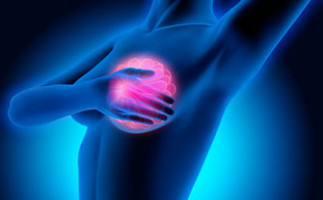
Not only is breast cancer more than one disease, but a single breast cancer tumour can vary within itself, a finding that University of Pittsburgh Cancer Institute (UPCI) researchers discovered has the potential to lead to very different patient treatment plans depending on the tumour sample and diagnostic testing used.
The results, reported online and scheduled for an upcoming issue of the journal Clinical Cancer Research, demonstrate that tumour sampling techniques used with newly developed "personalised medicine" gene expression profile tests may need to be refined to ensure that the most appropriate tumour sections are selected for testing.
"These tests are a good thing--they've done an incredible job identifying women with breast cancers that have a low risk of recurrence who don't need chemotherapy, saving them from the toxicity and discomfort of unnecessary treatment," said Adrian V. Lee, Ph.D., professor of pharmacology and chemical biology at UPCI, partner with UPMC CancerCenter. "However, as with any new technology, we need to understand how these tests work, and we're finding that the sampling process, which involves liquefying tumours, loses information that could be important in determining the best treatment plan for patients with more aggressive tumours."
Gene expression profiling is an increasingly popular type of test that tells doctors what certain genes are doing in a tissue sample, such as causing the cells to actively divide and multiply.
Several tests have been developed in recent years to aid oncologists in developing breast cancer treatment plans.
They involve taking a small bit of the tumour--or multiple small bits mixed together--and testing it.
The tests can tell oncologists if the cancer has a low, intermediate or high risk of recurring.
The level of risk can help doctors and patients decide whether an aggressive treatment plan involving chemotherapy is beneficial or likely to do more harm than good.
Dr. Lee and his team examined 71 cases of a type of breast cancer called "oestrogen-receptor-positive" that was caught early and hadn't yet spread to other parts of the body.
In all cases, the tumour had been removed and samples taken for gene expression profiling.
A total of 181 samples were taken from various parts of the tumours, and the researchers measured the expression of 141 different genes from five different types of gene expression profile tests commonly used for breast cancer tumours.
For 25 percent of the patients, their tumours received a different risk of recurrence score depending on which sample was processed.
"This indicates that one part of the tumour is more aggressive than another part. If an oncologist were to know this, he or she would likely recommend a treatment plan tailored to destroy the most aggressive section of the tumour," said Dr. Lee.
Because the patients in this study were all caught early, their risk of recurrence was low to begin with, and there weren't enough recurrences to make a meaningful determination on whether they would have done better if more samples were tested from their tumours.
"It would be valuable to repeat this study with a much larger group of breast cancer patients and follow them over time so that we could definitively determine if the way sampling is done with these tests is, indeed, resulting in patients getting cancer recurrences that wouldn't have happened if the sampling process was changed," said Dr. Lee.
Source: University Of Pittsburgh Schools Of The Health Sciences
The World Cancer Declaration recognises that to make major reductions in premature deaths, innovative education and training opportunities for healthcare workers in all disciplines of cancer control need to improve significantly.
ecancer plays a critical part in improving access to education for medical professionals.
Every day we help doctors, nurses, patients and their advocates to further their knowledge and improve the quality of care. Please make a donation to support our ongoing work.
Thank you for your support.